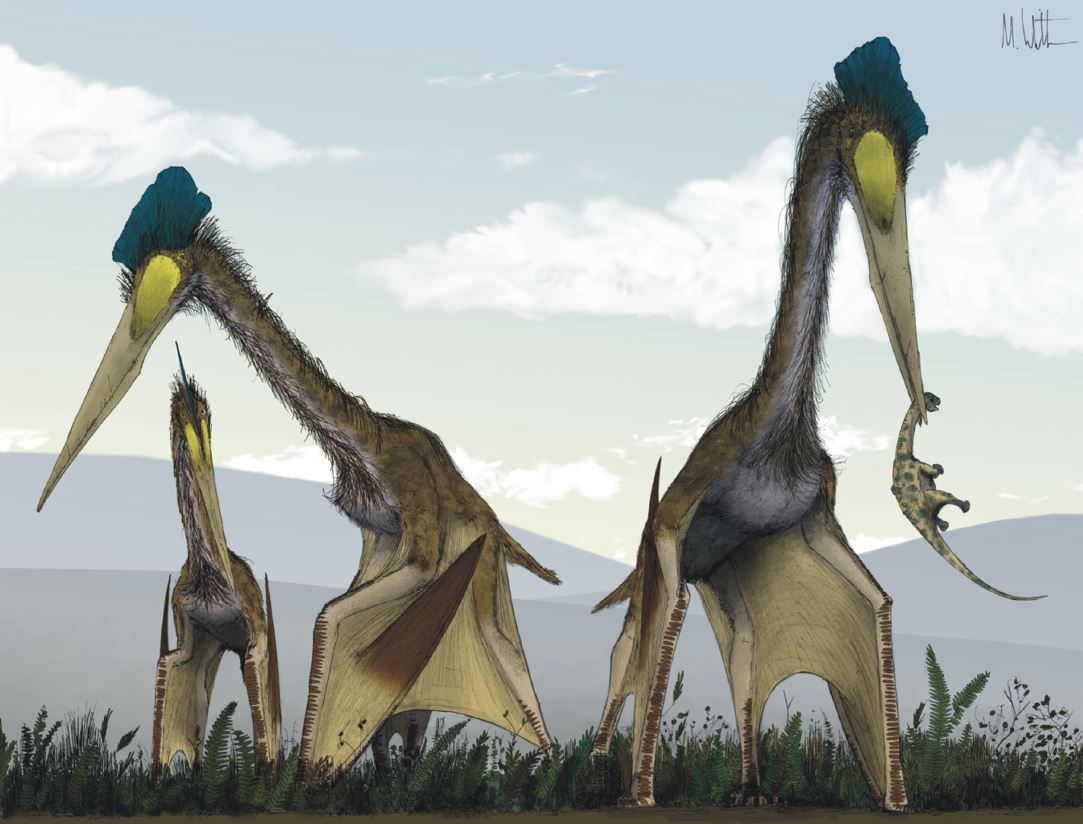
Welcome to another thread on the science behind the new @AppleTVPlus @bbcstudios series #PrehistoricPlanet, specifically EP 4: ICE WORLDS. This thread will work best if you read the tweets as you watch the episode in real time – do this if you can… 





I was lead scientific consultant on #PrehistoricPlanet, and it was a great privilege to work with so MANY excellent and talented people ... such an amazing team! Here we go...
Ice Worlds focuses on the #dinosaurs of the far north and south of the Maastrichtian (very latest #Cretaceous) world, places where conditions were cool or cold – especially in winter, of course – and where the flora and animals were adapted for seasonal darkness and cold…
I know it’s always a surprise to see #Cretaceous #dinosaurs in ice and snow, but this was _really was the case_ … at least, during parts of the Cretaceous world and during parts of the year… #PrehistoricPlanet 
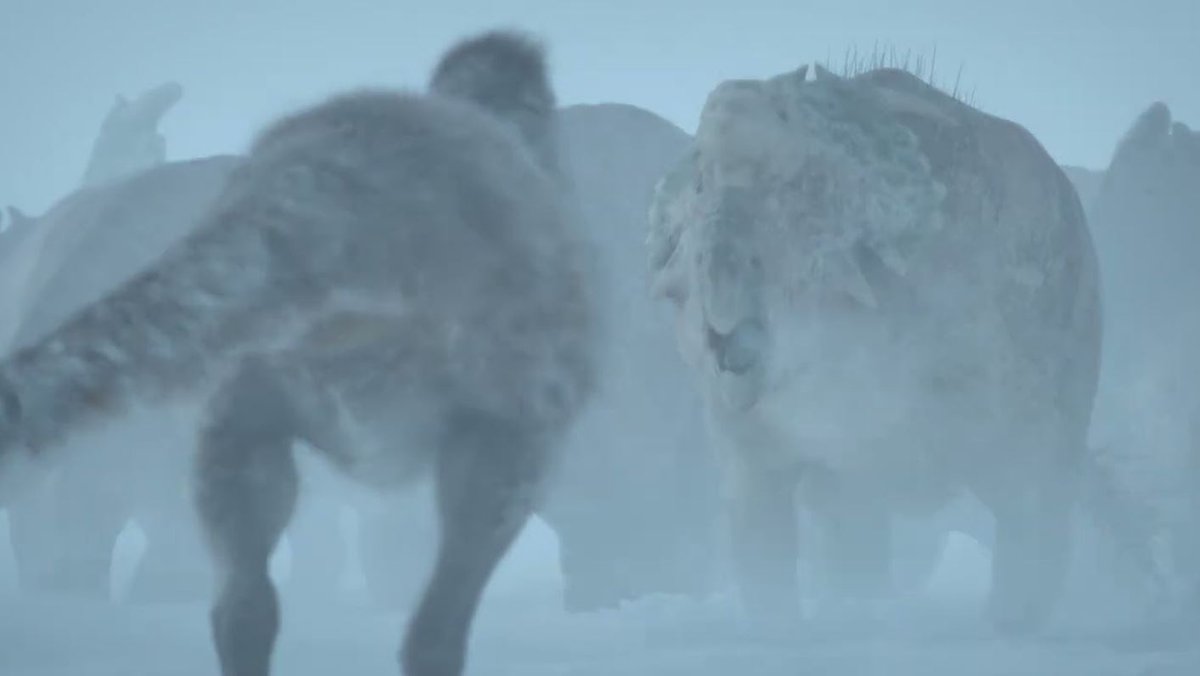
The #PrehistoricPlanet team incorporated information from a new, rigorous, and highly detailed palaeoclimate model constructed by Prof Bob Spicer and @Climate_AlexF. This model shows...
... that the Maastrichtian polar regions had sub-zero winter temperatures, sea ice, upland glaciers and snowfall (resulting in snow depths of around 1 m, or 3 ft). This view is backed up by geological, fossil and isotope data too...
So the #dinosaurs of places like Alaska were – during the colder months (November to February at least) – indeed having to deal with snow and ice. Fog would have been omnipresent too, the poles would have been ‘cloud caps’ more than ‘ice caps’ in the Late #Cretaceous world...
For more on our #palaeoclimate modelling, see this article by @Climate_AlexF ... ounews.co/science-mct/sc… #PrehistoricPlanet #dinosaurs #Cretaceous
The episode starts by showing winter releasing its grip by March or April. The first animal we meet is a coyote-sized dromaeosaur: the animal is based on Dromaeosaurus specifically (fossils of which are known from northern Canada), but... #PrehistoricPlanet #dinosaurs 

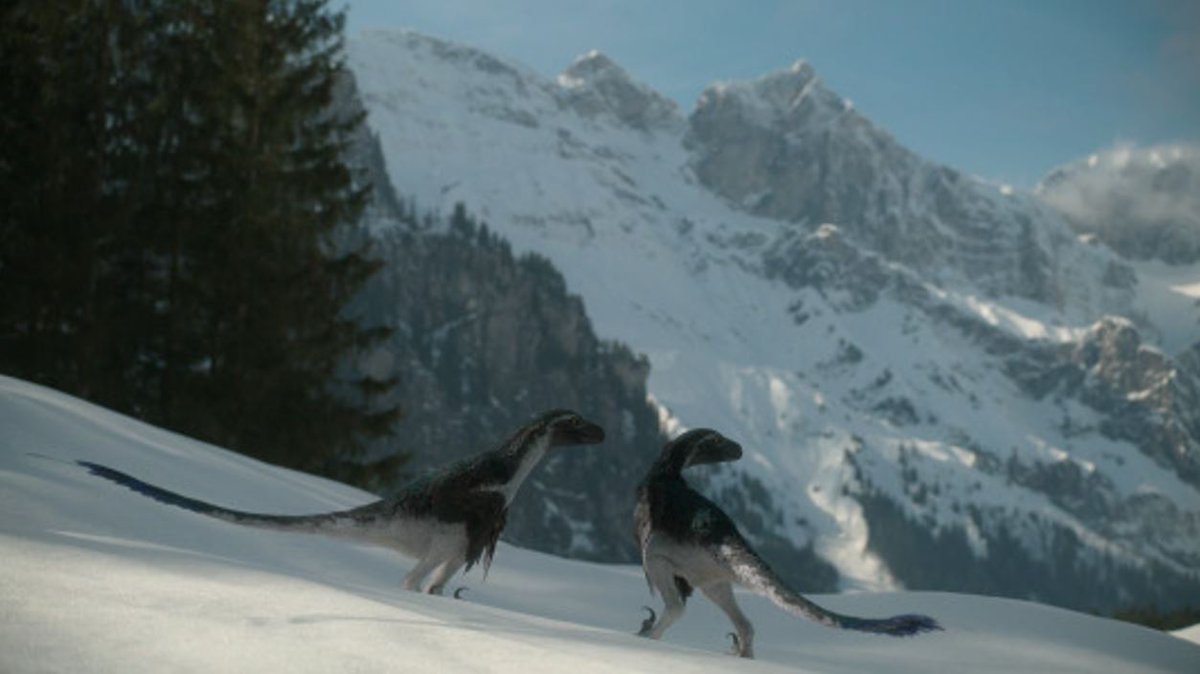

... other dromaeosaurs are known from the far north and you can pretend that it’s one of them if you want…
Many of the specific postures and pieces of body language present on our animals are based on particular fossils or are informed from the phylogenetic distribution of behaviours in living animals (we used phylogenetic bracketing a lot)…
This includes the curled sleeping posture of the dromaeosaur, ‘underwing’ (as opposed to ‘overwing’) head scratching, and much more… #PrehistoricPlanet 

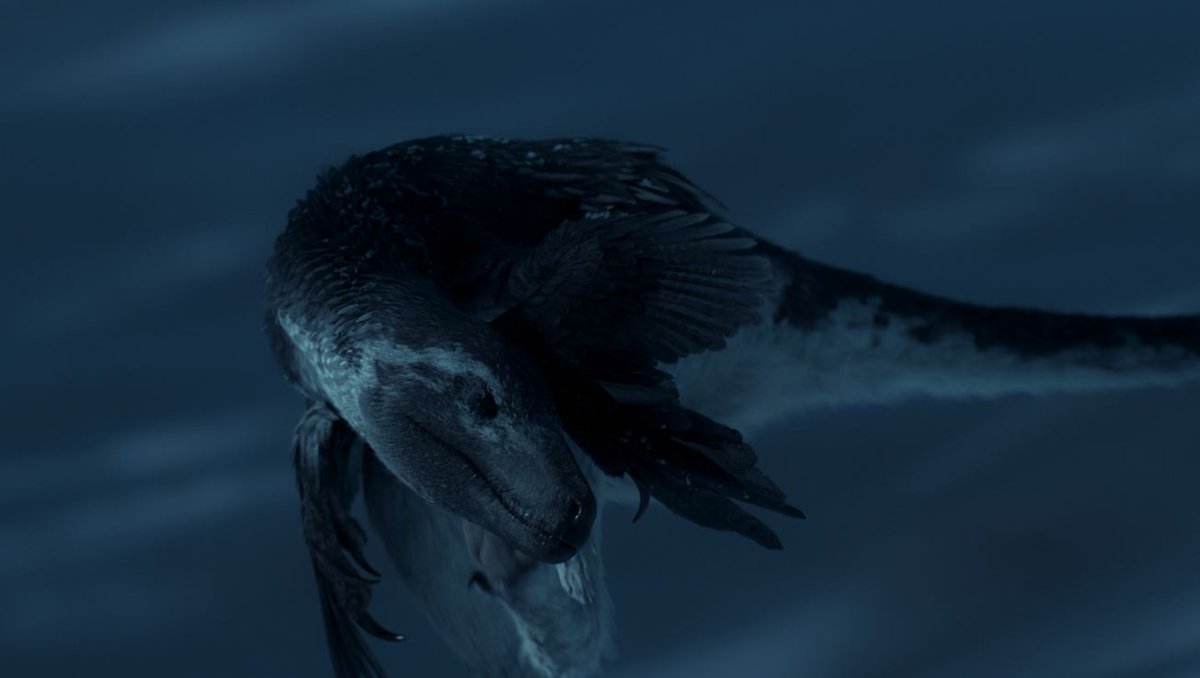

There is no doubt that these animals were fully feathered, with a plumage as complete as that of a modern bird. Chinese fossils show that at least some maniraptorans of cool climates had feathered toes and fingers, details we include on our animals here…
Dromaeosaurids like this were generalists that preyed on a variety of small animals (including arthropods, small mammals, the hatchlings of other #dinosaurs), an idea we reinforce by showing our dromaeosaur capture a beetle…
But as coyote-sized predators that could hunt together (they weren’t necessarily pack hunters, but might still have teamed up: read on), there’s also a very real possibility that they could have captured and defeated animals of about human size or even larger…
Remember that dinosaurs like dromaeosaurs may well have been social. Some experts have pushed back on the ‘pack hunting’ model but this is a case of causing the pendulum to swing too far one way…
Lizards, crocodylians & birds shows that social hunting/group hunting/co-operation is likely for dinosaurs like dromaeosaurs (this is not unique to mammals like wolves & lions) and direct fossil evidence – including tracks and associated specimens – provides additional support…
Moving on, we see a herd of the giant hadrosaur Edmontosaurus. We know so much about edmontosaur skin anatomy, the shape of the beak and distribution of the muscles, mostly thanks to amazing mummified specimens. Our hadrosaurs incorporate new data on the anatomy of the hands… 

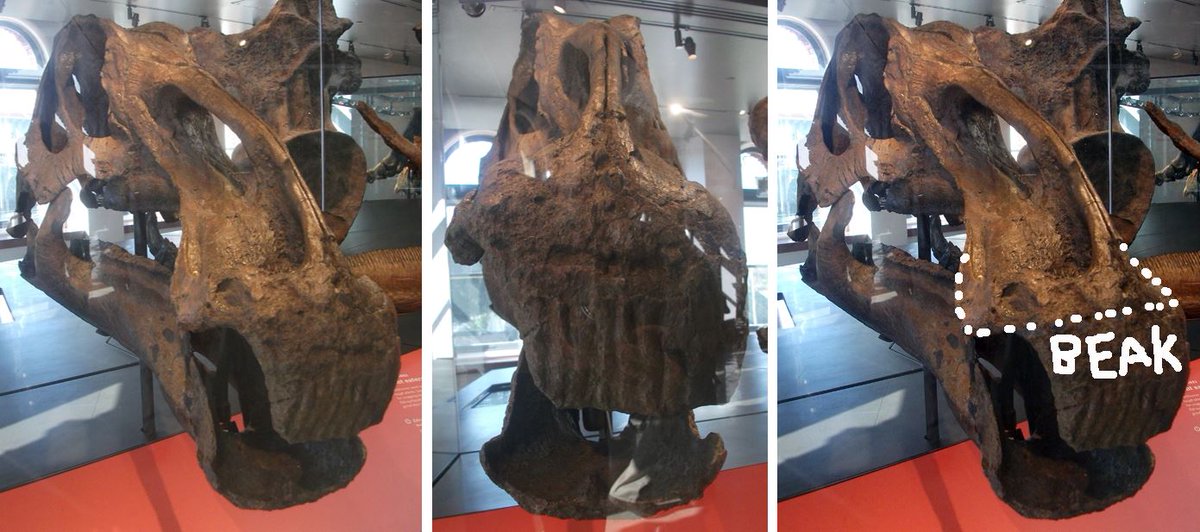

Some experts have argued that the edmontosaurs of the far north were migratory. This is contradicted by several lines of evidence, not least of which is the discovery of hadrosaur babies in the north of Alaska...
Our edmontosaurs are not meant to be migratory; they’re referred to as ‘nomads’, as animals that are constantly on the move, always eating… #PrehistoricPlanet
Edmontosaurs were like most #dinosaurs in that they produced 20-30 eggs per clutch, and thus had large numbers of juveniles… so, ‘life was cheap’ in these animals, and the loss of youngsters to predation, to drowning while crossing rivers and so on must have been common… 

A group of predators (like those dromaeosaurs) following the hadrosaurs at a river crossing would likely, then, have been lucky enough to find injured, deceased, or abandoned youngsters. Sorry for all the baby killing, everyone, but the #Cretaceous world really was like this!
Next, we meet a group of male ornithomimids (‘ostrich dinosaurs’) forming a nesting colony on an island in a river… #PrehistoricPlanet #dinosaurs 

Fossils confirm that ornithomimids were shaggy-coated animals (albeit it with mostly naked legs) with large structures (either complex feathers or quill-like structures) forming big surfaces on their forelimbs. Because... #PrehistoricPlanet #dinosaurs 

... those ‘large structures’ weren’t present in juveniles (image by Julius Csotonyi), we infer that they were a mark of sexual maturity, so the young adult male who’s the main focus of the story has only recently come into possession of them… #PrehistoricPlanet 

In the past, artists used to make ornithomimids look like scaly ostriches but they very much had their own look. I think we’ve succeeded in making them handsome and unique… #PrehistoricPlanet 

Essentially nothing is known of ornithomimid nesting behaviour. We infer (based on data from other #dinosaurs) that they built crater-shaped nests and used heat generated from the decomposition of plant material to incubate their eggs (they likely didn’t sit on them)…
Nest-building therefore required the collection of a good quantity of plant material. Based on behaviour seen in birds, we went with the idea that males constructed a sort of ‘stage 1’ nest in an effort to impress arriving females...
.... who then worked with the males to build the ‘stage 2’ nest. Our males are therefore just compiling the ‘foundations’…
Remembers that non-bird #dinosaurs _seem_ to have been egalitarian: males and females are often similar in size and with similarly elaborate crests and so on, and there’s evidence that males contributed to nesting and nest care... #PrehistoricPlanet
Plus, phylogenetic bracketing shows that male parental care is predicted for some or most #dinosaurs (males contribute to parental care in about 50% of bird species, and males also play a parental role in some crocodylians)...
Next up, we look at Olorotitan, a hollow-crested (or lambeosaurine) Maastrichtian #hadrosaur from the Amur Region of Russia (photos taken at the IRSNB, Brussels). It’s the most complete lambeosaurine known outside of North America… #PrehistoricPlanet 



Nothing about the social or family life of Olorotitan is known directly BUT a substantial amount is known about #hadrosaur nesting in general, predominantly thanks to the Maiasaura discoveries made in Montana and Hypacrosaurus ones in Canada…
These confirm that #hadrosaurs were colonial nesters, and also that they revisited the same locations (and thus presumably re-used the same nests) over years, decades and perhaps centuries…
We show Olorotitan arriving at a location where old nests – giant, crater-shaped structures, made by the animals with their snouts and feet – require a bit of tidying before new eggs are laid… #PrehistoricPlanet #dinosaurs 



Ice Worlds shows Olorotitan using geothermal heat to incubate their nests. Direct evidence shows that #dinosaurs of some species did this. The area concerned – the Okhotsk-Chukotka Volcanogenic Belt (or OCVB) – was one of the most active volcanic areas of the #Cretaceous world…
We have a good timetable of #hadrosaur incubation and embryonic growth thanks to studies of fossil eggs and embryos: they show that incubation was a few months long (3-6), meaning... #PrehistoricPlanet 

... that a spring laying could still result in babies exploiting 24 hour daylight and rich plant growth throughout late summer, autumn and maybe early winter too…
Exactly what happened to #hadrosaur babies after hatching is the source of a bit of controversy but the bulk of evidence indicates that they remained in the nest for a while (a few weeks at least), the parents bringing food to the nest. We show these dinosaurs eating horsetails…
Horsetails are surprisingly nutritious and palaeobotanist Carol Gee has described them as a ‘superfood’ ideal for fuelling the fast growth of baby #dinosaurs... #PrehistoricPlanet
Data from bone sections show that hadrosaur juveniles grew quickly, so a few months of rapid feeding would have allowed them to put on sufficiently weight to leave the nesting nest…
… we show the animals being sufficiently bothered by mosquitos to encourage them to move away, something inferred from living animals (where mosquitos really can be a life-threatening problem, causing dangerous blood loss and even choking!)...
Blood-sucking mosquitos, of course, are certainly known from the Late Cretaceous fossil record...
Our next sequence depicts something that was common in the #Cretaceous world: FIRE. Abundant charcoal shows that forest fires were ubiquitous throughout Cretaceous times, in part because of higher atmospheric carbon & higher temps, but perhaps because of more dynamic storms too…
#Dinosaurs and other Cretaceous animals must have been used to fire-prone ecosystems, and we can only speculate on how they coped. The idea that some dinosaurs exploited fire edges is not new and has a precedent today in the behaviour of predatory birds and other animals…
We see a human-sized troodontid theropod – a very bird-like, fully feathered, adaptable hunter with sharp claws and numerous teeth – foraging close to a fire’s edge… #PrehistoricPlanet 

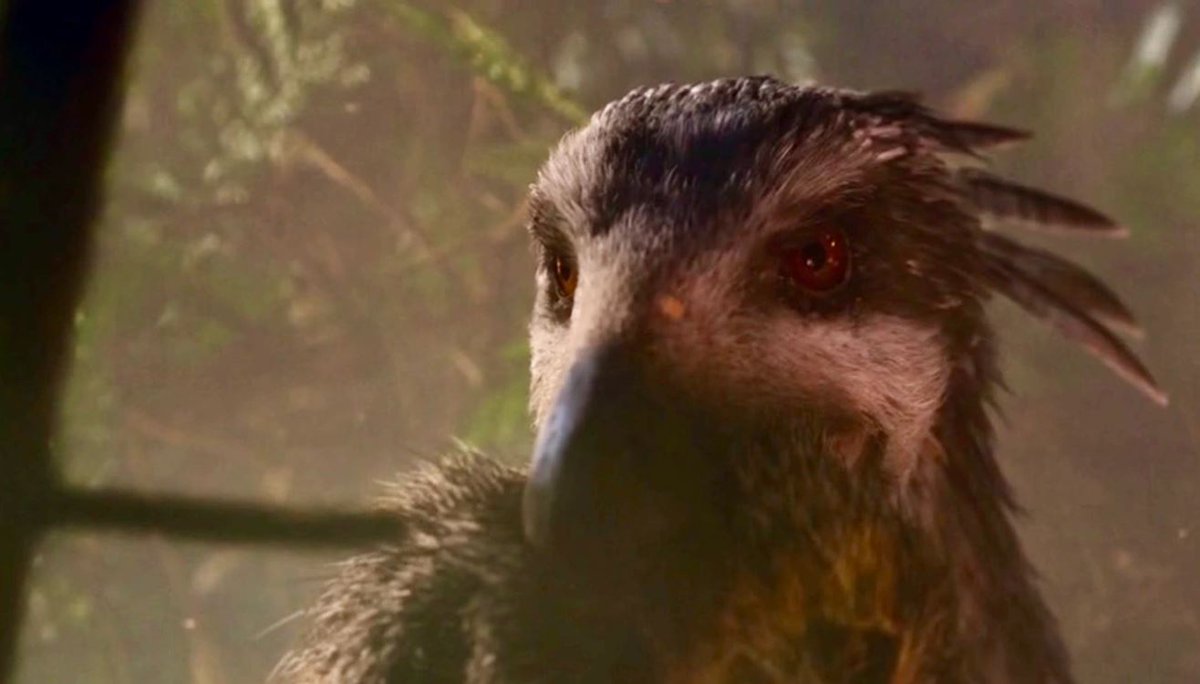

Which genus-level name we should give to North American troodontids has been in flux. Should this animal be Troodon, Stenonychosaurus or Latenivenatrix? We switched between each of these names during the history of #PrehistoricPlanet but ultimately used the group name!
The episode shows the troodontid picking up a burning stick (thus employing tool use) and deliberately spreading fire. We do not, of course, have any direct evidence that troodontids did this, but we think – based on many good eyewitness accounts – that...
.... modern predatory birds do it. Yes, they deliberately spread fire in order to create more feeding opportunities… #PrehistoricPlanet 



We aren’t sure that troodontids were similar to modern raptors (raptors = predatory birds like eagles) in cognitive abilities or behavioural flexibility, but… frankly, we aren’t sure of anything when it comes to the intelligence of non-bird dinosaurs and...
... I am more than happy – based on the behaviour of living lizards, crocodylians and birds – to imply that they could have surprised us in flexibility and innovation…
The troodontid is lucky in catching a marmot-like mammal: an example of the omnivorous or carnivorous #multituberculate Cimolodon. Our Cimolodon model is amazing and it’s sad that you don’t get to see it in much detail! #PrehistoricPlanet 

We then move to the south – to forested, temperate Antarctica – where we meet the #ankylosaur Antarctopelta. Antarctopelta is poorly known and our reconstruction of it is conservative: we essentially show it as a ‘default ankylosaur’ (thanks to @VictoriaArbour for help here)... 

What appears to be a close relative of Antarctopelta – Stegouros elengassen from Chile, named in 2021 – was published after we’d finished putting our Antarctopelta sequence together. It shows that these #ankylosaurs had a remarkable arrangement of osteoderms on the tail…
These formed a flattened, club-like structure termed a macuahuitl (attached images of this structure from Soto-Acuña et al. 2021). I’ve told my palaeontologist colleagues to stop describing and naming new #dinosaurs, but they just won’t listen… #PrehistoricPlanet 

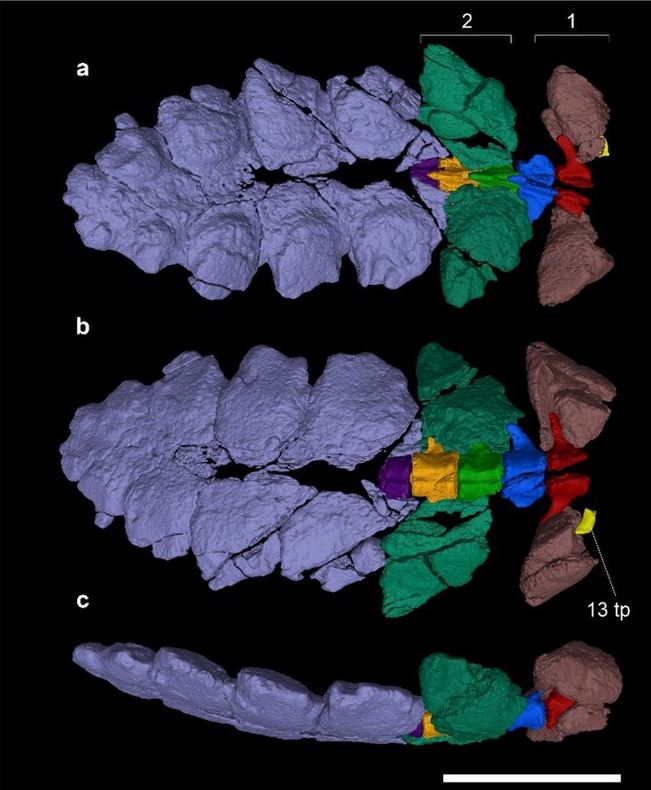

The Antarctopelta individuals we show are youngsters that hang out together. Direct evidence for this comes from Asian ankylosaur fossils: we know that youngsters stayed together in some species, and even curled up next to each other to sleep…
We also show Antarctopelta as able to excavate underground dens. Again, this is based on direct fossil evidence, since #ankylosaur anatomy reveals details of the limbs, vertebrae and body shape that demonstrate good digging abilities...
The final sequence in Ice Worlds shows how the big #ceratopsian Pachyrhinosaurus (specifically, the Maastrichtian P. perotorum, named in 2012: attached image from Fiorillo & Tykoski 2012) is forced to move out of a forest by a roving band of the Alaskan #tyrannosaur Nanuqsaurus… 

Both animals lived in a mostly forested environment, not a freezing tundra like that frequented by musk ox and wolves today. But there would still have been open areas, snowy blizzards, and winters when temperatures dipped well below freezing...
... so what we show in the episode _would_ have been encountered by these animals on occasion… #PrehistoricPlanet 
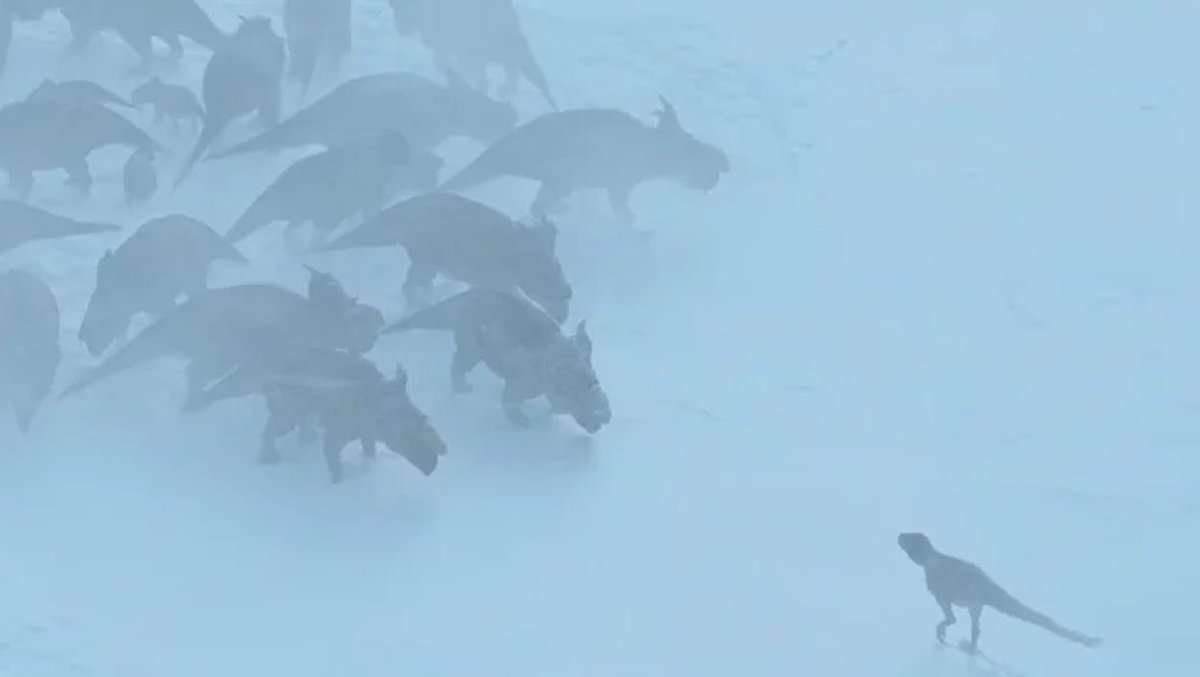
We gave our pachyrhinosaurs quills on part of their upper surface. This is considered controversial since the only evidence for quills in #ceratopsians comes from the archaic, Early Cretaceous Psittacosaurus (attached images from Vinther et al. 2016, and by @Paleocreations)... 



.... they aren’t known for ceratopsids, the #ceratopsian group that includes Pachyrhinosaurus, Triceratops and so on… #PrehistoricPlanet
I think it’s a misplacement of confidence, however, to think that we know everything there is to know about the external covering of these #dinosaurs: it’s not unreasonable to imagine that _some_ quills might have been present in some ceratopsids… #PrehistoricPlanet 

You might be wondering how these big animals remained warm in cold conditions. For a time, the idea that some of them were insulated by filamentous coats was explored by palaeoartists (art by @MarkWitton), but this is no longer considered likely… 

Very cold conditions were likely dealt with by behaviour (animals deliberately seek shelter, go into deep woodland, and huddle together when it’s cold), but a layer of fat and maybe counter-current heat exchange systems in their extremities provided protection too…
In the modern world, captive rhinos, elephants and hippos have all been maintained in outdoor freezing temperatures on occasion (thought this is certainly not recommended or considered acceptable in terms of modern husbandry). They might not like it, but they can endure it…
As for #tyrannosaurs, we DO know that at least some tyrannosaurs of cool climates had a filamentous pelt, since this is preserved on specimens of the big Chinese tyrannosaur Yutyrannus… 

Yutyrannus is an archaic #tyrannosaur, not an ‘advanced’ one like Nanuqsaurus, so it might be that what goes for Yutyrannus doesn’t go for Nanuqsaurus. Whatever, it’s by no means clear that 'advanced' tyrannosaurs were devoid of filaments. I actually think that they had them…
We show Nanuqsaurus as a mid-sized tyrannosaur of about 7 m. It has since been argued that Nanuqsaurus actually reached somewhat larger sizes. Our individuals could therefore be subadults or large juveniles… #PrehistoricPlanet 



As usual, there loads more to say (I think this thread is longer than my others) but I hope this explains some of the background to our decisions! #PrehistoricPlanet was brought to the screen thanks to the work of a massive, hard-working team and it was great to be part of it…
… to work with producers, researchers, CG-artists and model-makers, consultants and so many others on this new @AppleTVPlus @bbcstudios production… 





Be sure to watch #PrehistoricPlanet if you haven’t already. If you liked it and hope that we’ll do MORE, tell your friends and say nice things about us on review sites! A thread for EP 5 FORESTS is coming next. This is now the 4th #PrehistoricPlanet thread I’ve published. So...
To see the thread for EP 1 COASTS, go here...
https://twitter.com/TetZoo/status/1528783515885641728(cont) #PrehistoricPlanet
To see the thread for EP 2 DESERTS, go here...
https://twitter.com/TetZoo/status/1529795393378308097#PrehistoricPlanet
And to see the thread for EP 3 FRESHWATER, go here...
https://mobile.twitter.com/TetZoo/status/1530157214392012802That's all for now, thanks for reading :) #PrehistoricPlanet
• • •
Missing some Tweet in this thread? You can try to
force a refresh










